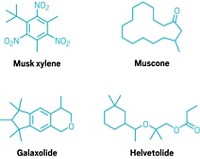Advertisement
Grab your lab coat. Let's get started
Welcome!
Welcome!
Create an account below to get 6 C&EN articles per month, receive newsletters and more - all free.
It seems this is your first time logging in online. Please enter the following information to continue.
As an ACS member you automatically get access to this site. All we need is few more details to create your reading experience.
Not you? Sign in with a different account.
Not you? Sign in with a different account.
ERROR 1
ERROR 1
ERROR 2
ERROR 2
ERROR 2
ERROR 2
ERROR 2
Password and Confirm password must match.
If you have an ACS member number, please enter it here so we can link this account to your membership. (optional)
ERROR 2
ACS values your privacy. By submitting your information, you are gaining access to C&EN and subscribing to our weekly newsletter. We use the information you provide to make your reading experience better, and we will never sell your data to third party members.
Biological Chemistry
Fishing For The Scent Of Death
Identification of olfactory receptor sensitive to cadaverine could inform study of aversion and attraction
by Craig Bettenhausen
November 18, 2013
| A version of this story appeared in
Volume 91, Issue 46
The smell of decaying flesh is highly repellent to many species, but the chemical basis for that aversion has been elusive. Using zebrafish as a model organism, Sigrun I. Korsching of the University of Cologne, in Germany, and coworkers have for the first time identified an olfactory receptor, TAAR13c, that responds to cadaverine, a diamine that is the main odorant in rotting flesh (Proc. Natl. Acad. Sci. USA 2013, DOI: 10.1073/pnas.1318596110). TAAR13c showed no response to related molecules lacking an amine at each end, suggesting the presence of two remote recognition sites on the receptor that must both be occupied to trigger a response. The receptor did respond to other C4 to C8 diamines, including putrescine, another product of protein decay. The identification of an olfactory sensor for such odors could provide researchers a chemical handle to study the biochemistry and neurology of aversion or attraction behaviors in animals related to zebrafish.





Join the conversation
Contact the reporter
Submit a Letter to the Editor for publication
Engage with us on Twitter